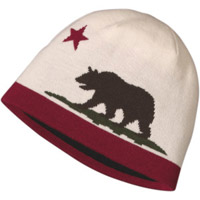Kids' Cold Weather Clothing
Winter Clothing for Boys and Girls - infants, toddlers and juniors
![]() This is the UK page |
Go to US page
This is the UK page |
Go to US page
![]()
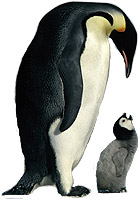
Layering for warmth is the way to go when dressing for a cold or very cold climate. While a single very warm outer layer may seem the obvious choice, it gives less flexibility to control temperature. When you get too warm it's a big step-down to take off the big coat, likewise if you're too cold, it's maybe a too-big step up to put it back on again.
Layering doesn't mean lots of thin layers, but different layers for different purposes, useful to remember when kids are more eager to rush outside to play than get dressed properly for the cold first. Layers give flexibility in use and can also be used alone when the temperatures aren't so low - an important consideration when fast growing kids mean that virtually nothing is ever going to fit them for two winters!
Surface area and volume - insulating your little penguin. Kids are proportionally smaller versions of adults, this means that they have a greater surface area to volume ratio than an adult does and will cool down faster in cold conditions and warm up faster in hot conditions being less able than an adult to control their body temperature by physiological means. So relative to an adult, a child will need somewhat more clothing for the same cold conditions in the way that a penguin chick needs more insulation than its parent.

Base, Core (Foundation) Layer  Underwear,
a soft layer next to the skin that provides warmth as
well as comfort. Close fitting is good to help
keep the heat in and also to make it easier to pull
additional layers over the top. Underwear,
a soft layer next to the skin that provides warmth as
well as comfort. Close fitting is good to help
keep the heat in and also to make it easier to pull
additional layers over the top.If cold weather doesn't happen very often where you are, this is a good way of dealing with it without breaking the bank with clothes that can still be worn when it warms up again, whereas the heavy winter coat might just get grown out of before it's needed again after that week long cold snap. A versatile layer that can be an outer layer indoors
and helps with staying toasty outdoors. |
|
Mid Insulation Layer/s
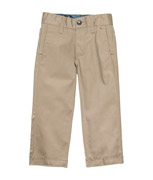 The
most versatile and variable layer which can go on as
an outer layer or act as a mid layer with extras over
the top. One or more lightweight layer/s of clothing
added or removed appropriately for the weather, temperature
and level of activity works better than one thick heavy
layer.
When added together warm air gets trapped between as
well as within the layers making the whole greater than
the sum of the parts. The
most versatile and variable layer which can go on as
an outer layer or act as a mid layer with extras over
the top. One or more lightweight layer/s of clothing
added or removed appropriately for the weather, temperature
and level of activity works better than one thick heavy
layer.
When added together warm air gets trapped between as
well as within the layers making the whole greater than
the sum of the parts.Natural fibers can be used for these layers they can be used in addition to, or instead of, modern synthetics which are easier to care for. Zips, collars, draw cords and pockets increase versatility and allow for increased ventilation during activity or for all openings to be pulled closed while at rest and/or in very cold conditions. The insulating layer can be combined with outer layer for wind and water resistant or can be separate. Fleeces in particular can't really be used as the only outer layer in the worst conditions despite the new coatings and finishes, they just aren't wind or water-proof enough on their own. Lower body insulation. Thick warm trousers of a heavyweight natural material for older kids or synthetic material such as polyester. Avoid denim though, it really isn't very friendly when it's cold and is quite unpleasant when damp. |
The Outer or Shell Layer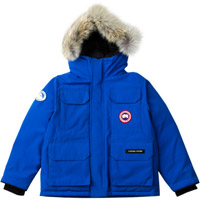 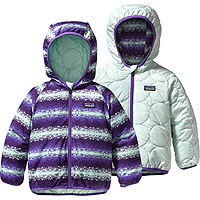 Outer
/ shell layer. This has to put up directly with what
the weather throws at it. So it needs to be
windproof and preferably waterproof too. Outer
/ shell layer. This has to put up directly with what
the weather throws at it. So it needs to be
windproof and preferably waterproof too. It may combine the shell function with insulation or it be simply be a "shell" without any extra insulation. Whichever it is, outer shell layers for kids especially should always have a hood to stop wind rain and snow getting down the collar and also as it can't be lost in the way that a hat can! Elasticated cuffs for little ones and fastening cuffs for older kids along with draw cords to prevent warm air being lost while keeping snow, rain and wind out are essential features.
Many waterproof garments don't breathe so well and so can get a bit sweaty after a while unless they are a breathable fabric (which all but the cheapest tend to be these days). They also tend not to be so soft when very cold, so choose according to your intended temperature use. You may be tempted to get a cute child-version of an adult coat, a "looking at coat" as I think of them, often made of wool and with a tailored shape. While this might be perfect for Sunday Best or special occasions, they really aren't very effective at keeping the winter out, not being wind or waterproof, often with button fronts, loose sleeves and no draw-cords or elastic anywhere to keep body warmth in and the weather out.
Girls winter coats | Boys winter coats 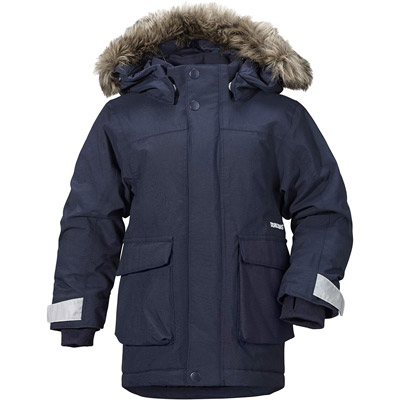 Didriksons
Kure Kids Parka Didriksons
Kure Kids Parkaboys or girls, sizes 18 months to teenagers |
|
Accessories to Protect the
Extremities - Head, Fingers and Toes (not forgetting
ankles, wrists and neck) Fingers, toes and ears can get very cold very quickly, they can also lead to a loss of heat from the rest of the body. They also have a disproportionate influence in how comfortable you feel, including how long kids can play out in the snow or how long you get to stick to your plans without having to change them to warm up chilly kids. So don't ignore the extremities! Hands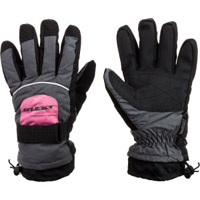 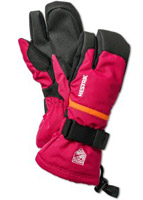 Mittens
are more effective than gloves for keeping warm. For
small children they also have the enormous advantage
of being much easier to get on than the detailed problem
that getting five little fingers each into its own small
compartment can pose. Mittens
are more effective than gloves for keeping warm. For
small children they also have the enormous advantage
of being much easier to get on than the detailed problem
that getting five little fingers each into its own small
compartment can pose.Older children will be able to get gloves on themselves, though the mittens-are-warmer truism still applies. There's not a lot you can do in terms of manual dexterity with mittens on, but if there's not much to do and keeping the hands warm is the most important thing, then they are the obvious solution. In extremely cold conditions a pair of thin gloves with mittens over the top work very effectively, not the least as the mitts can be slipped off to allow dexterity with the gloves alone giving flexibility of purpose. Long wrists are always useful whether they are elasticated under the sleeve or loose and over the sleeve as they prevent heat loss from an exposed wrist which can be significant or at least quite uncomfortable, especially in snow. Ski-type gloves are a good if not the cheapest solution, they are both warm and water resistant which helps in snowy conditions. Kids' gloves | Kids' mittens Head
"When your feet are cold, cover your head"-
Inuit saying
The good thing about hats is there is an almost endless variety of them so you should be able to find one that your child likes and wants to wear. While hoods are good at keeping the weather out, they do restrict movement somewhat which you still retain with a hat, so I always made sure my children had both. A couple of tips, avoid ones with bobbles or ears or similar sticky-out bits. Plain hats such as beanies allow you to easily pull a hood over them for extra warmth when needed, those extra "cool" additions will make the hood less effective as the hood is kept away from the hat. Dangly bits at the side might look neat in the store, but when the wind starts to whip them constantly against chilly cheeks, you'll really wish you'd gone for the plainer version. I do appreciate however that you may have an uphill struggle to implement the sensible over the cool looking solution here - good luck with that! Make sure hats cover the ears too or have ear-flaps that can be folded down when needed, (it also stops the bigger kids flicking exposed ears in the cold). Balaclavas can be very effective in cold conditions, they can be rolled up as a standard hat or unrolled to provide extra warmth, especially useful in conjunction with a hood attached to the shell layer. Hats - Girls' | Boys' | Balaclavas Feet Socks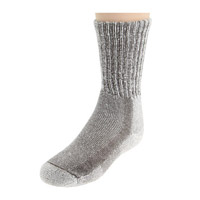 A
thin pair of cotton inner socks with thicker outer socks
works well with winter boots. Wool is the best
material for the outer socks as it is warm though less
prone to making the feet sweat than synthetic material,
if dampness through sweating does occur, they still
provide good insulation. 100% wool might sound best
but a small amount of a synthetic material such as nylon
gives much better wear while some elastane or similar
stretchy material gives a snug fit that doesn't
start to sag after a while. A
thin pair of cotton inner socks with thicker outer socks
works well with winter boots. Wool is the best
material for the outer socks as it is warm though less
prone to making the feet sweat than synthetic material,
if dampness through sweating does occur, they still
provide good insulation. 100% wool might sound best
but a small amount of a synthetic material such as nylon
gives much better wear while some elastane or similar
stretchy material gives a snug fit that doesn't
start to sag after a while.Don't be tempted to put too many socks on and make the boots tight. Squashing out the air which provides the insulation means they won't be as warm. Boots
Proper "winter boots" have built in insulation, both in the upper and also and especially in a thick sole which prevents a loss of heat to the ground, this becomes a very significant issue in the colder months in contrast to being something you don't notice at all for the rest of the year. The very coldest weather boots have soft insulated uppers, thick plastic or rubber soles and particularly thick insoles to prevent heat loss. Being so insulated they are large and can make you rather clumsy on uneven ground. A good relatively recent development is the neoprene wellington style boot. These are basically a rubber wellington or gumboot with a close fitting neoprene rubber upper, thicker than a normal rain boot which is also insulated, they provide ruggedness and good rough terrain performance. Boys snow boots | Girls snow boots | Boys winter rain boots | Girls winter rain boots In-between Bits
These are the wrists, ankles and neck which can become cold and uncomfortable. Heat will be lost from these areas if not insulated as blood moves between other better insulated areas.
|

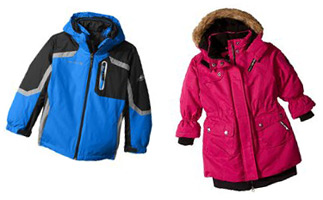
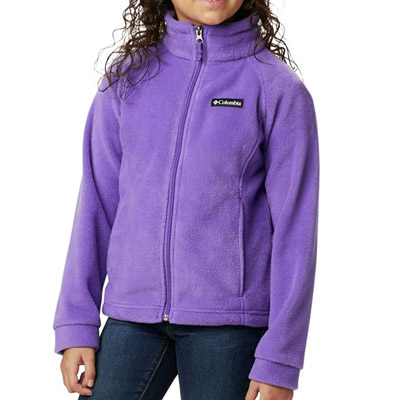
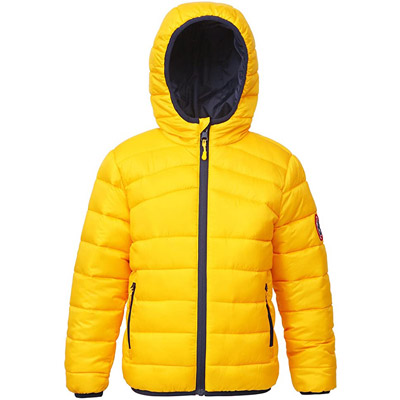
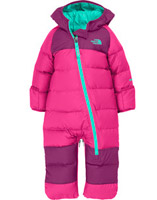
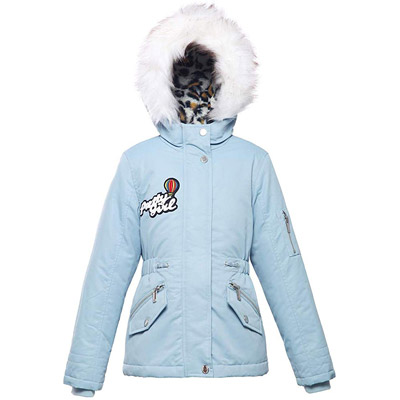 Boys
and Girls - OshKosh B'Gosh Perfect Heavyweight
Jacket Coat
Boys
and Girls - OshKosh B'Gosh Perfect Heavyweight
Jacket Coat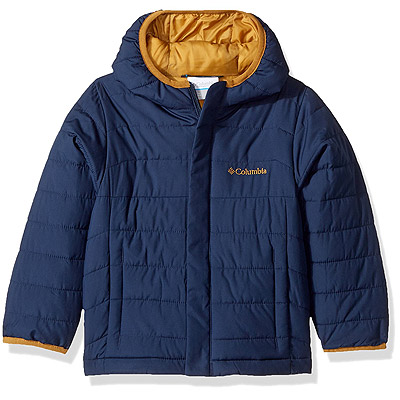 Boys
and Girls - Columbia Powder Lite Puffer Jacket
Boys
and Girls - Columbia Powder Lite Puffer Jacket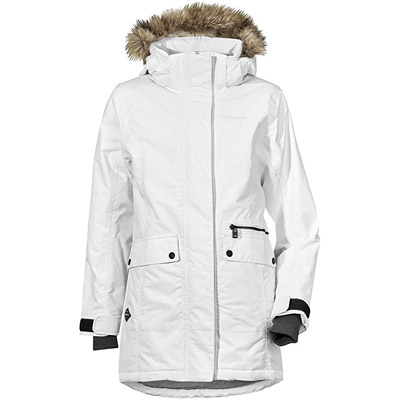 Didriksons
Zoe Girls Parka New Season
Didriksons
Zoe Girls Parka New Season